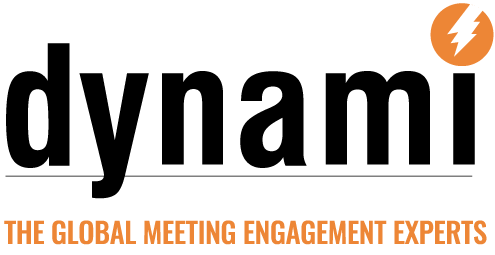It’s a new year, likely with a new budget, and new goals and objectives for a successful 2018. And that includes all those meetings and events that are sprinkled throughout your new calendar. But before you begin working on your next event, ask yourself if you’re going about it in the most efficient manner possible.
If not, you should seriously consider taking a disciplined Strategic Meetings Management Program (SMMP) approach.
First labeled by the Global Business Travel Association, an SMMP factors in everything from spend, selection of vendors, purchasing of supplies, contract negotiation, alignment with your organization’s stated business objectives, critical timeline development, monitoring budget and activities at pre-determined intervals, etc. Aside from precise planning and (hopefully) flawless execution of an engaging, info-rich event, it also includes follow-up measurement to quantify success or, yikes!, non-success.
I once worked a program for a major manufacturer of outboard marine engines. The client planned to bring its 900+ independent dealer network to an expensive coastal resort, unveil a new product, and demo it on the water. All while wining, dining and enjoying social activities (including a spectacular fireworks display) over the course of 4-5 days. Needless to say, it was going to be a very pricey program.
Being extremely cost-conscious, the client wanted to know how he would determine, post-event, whether or not the program was a success. We worked with him and identified a benchmark of taking a minimum 900 onsite orders for the new outboard engine. That would be the break-even point. When all was said and done, there were more than 1,500 orders taken and the client could rest well at night because his multi-million-dollar program had produced many more millions in incremental revenue.
We helped him navigate his way to success by utilizing an SMMP approach. Speaking of navigating …
Imagine you’re a sailor with a faraway, beyond-the-horizon destination in mind. You don’t just motor safely out of the harbor (known as “flying the iron spinnaker”) then point your bow in the general direction of the port you need to reach before hoisting actual sails. There’s much more to it than that.
- Have you factored in weather conditions, including wind, rain, seas, and prevailing currents?
- How will you safely cross shipping lanes where huge, vortex-generating cargo ships are found?
- Are you operating from the most recent navigational charts?
- Have you provisioned adequately (food, supplies, water, etc.) with a bit extra in the event delays occur?
- Have you crewed appropriately; hiring only those hands that are skilled, experienced and up to the physical and mental demands of the passage?
- Have you done a thorough safety check before launching to ensure your vessel is truly ship-shape?
- Have you filed a “float plan” (sailor’s version of an aviator’s “flight plan” that identifies departure date/time, course to be taken, planned arrival dates/times at varying intervals, ETA at your final destination, etc.) with authorities in case of an emergency?
As with most things in life — homeownership, parenting, career management, relationships and, yes, even strategically managed meetings and events – there’s a romantic notion of things and then there’s that pesky reality. Oftentimes, they don’t overlap.
Point is, you must plan, and plan meticulously, if you’re going to execute the program with back-end precision and the greatest possible return on your meetings and event investment (“investment” being the key word).
If you do your due diligence, you will succeed in reaching that faraway port in the most time- and cost-efficient manner possible even though certain things will always be out of your control. But when they occur, you’ve already thought through matters and are able to navigate them expertly. If you’re lackluster in your planning and preparation, you will likely zig-zag your way towards your goal — maybe reaching it, maybe not.
Here’s a half-dozen tips for protecting your meeting and event investment and maximizing its return (some are “Duh!”-level obvious while others you may not have considered):
- Befriend your procurement person. While some bristle at the seemingly confining nature of working with procurement experts, they may be the person who makes you look like a hero to your boss/client. Explain everything you know about your program to the procurement person – budget, goals, timing, preferred vendors, success metrics, etc. –because they’re your designated shopper and advisor. They can get you the best available talent, hard goods, venue, etc. at a price you might not otherwise have been able to negotiate. When you truly partner with procurement, you have the opportunity to co-author a great success story.
- Get a handle on the facts – every last one of ‘em! You wouldn’t walk into a potentially life-threatening situation – in this case, a potential career-threatening scenario – without knowing everything there is to know about circumstances. The devil is always in the details so be fully aware of everything related to the program. This enables you to make informed judgment calls and decisions and to help keep your program on time, on budget, and on strategy.
- Build alliances. You need to get all key constituents onboard with your thinking and your plan, not to mention your budget. Make sure your executives know and understand the “why” behind what you’re planning to do and gain their buy-in. Demonstrate to them how your recommended approach will deliver directly to achieving stated business objectives.
- Speak the right language. Every audience is different due to age, gender, mentality, attitude, setting, etc. You need to understand how they like to be communicated with and tailor your communication style, program elements, and messaging to have the greatest impact. All audiences want to leave a meeting or event knowing they are more knowledgeable, motivated, and equipped for having attended and taken part.
- Implement processes, where necessary. This allows you stay on-track and to ensure policies and procedures are being followed. But don’t overdo it or you’ll spend the vast majority of your time tracking and monitoring, leaving little time or space for creative brainstorming and innovation.
- Provide “weather updates”. Virtually all of us are weather-watchers, whether it’s checking smartphone apps, tuning in to radio and or TV, or simply looking to the skies for a reading. We must be equally diligent when designing and producing an SMMP. Circumstances and conditions change, and we must course-correct when and where necessary. If you’re not paying close attention, project/budget/timeline “creep” will occur and your likelihood of delivering a successful program on (or under) budget will be diminished. Make sure everyone knows exactly where things stand at all times.
In conclusion, if you have an upcoming meeting or event and like the idea of taking an SMMP approach, we would be happy to sit and consult with you at no cost. We’re only a phone call or email away and look forward to hearing from you.
TAKE AWAY
Implementing a Strategic Meetings Management Program approach to your meetings and events enhances the likelihood of achieving greater ROI on your meeting spend.
Happy New Year and May Success Be Yours in 2018 … and beyond!
Cheers,





